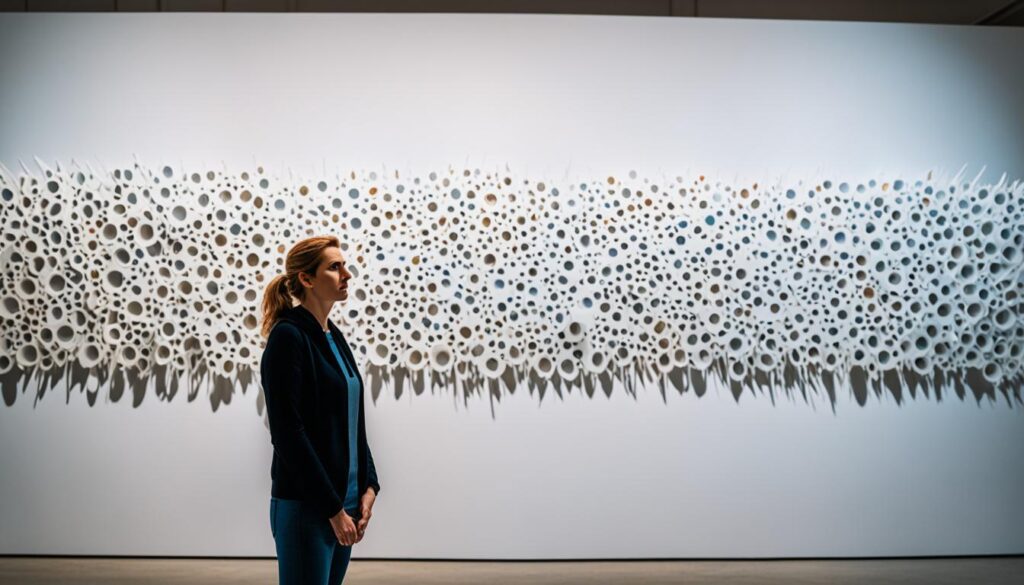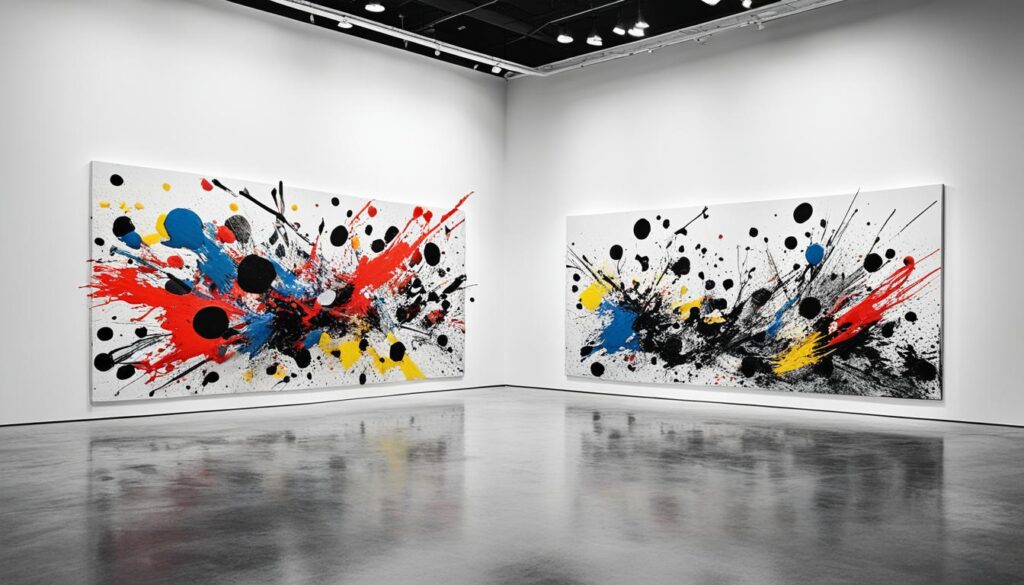Have you ever stood before a piece of art—perhaps a haunting painting or a stirring installation—and found yourself completely absorbed? In that moment, you might recall a time before distractions clouded your judgment, allowing pure *art appreciation* to flourish. This is the essence of disinterestedness in art theory, a concept urging us to engage with art without the haze of personal biases or vested interests. As the art world evolves, especially since the mid-1960s through the rise of conceptual and performance art amidst social upheaval, understanding this principle is more pertinent than ever.
Exploring disinterestedness not only unveils the complex interplay between form and meaning but also enriches your *aesthetic experience*. In the journey through this article, we will uncover how this idea has transformed over time, how it remains relevant today, and how it shapes meaningful interactions with art. The goal is to equip you with insights that enhance your connection to various artistic expressions and promote deeper contemplation as you navigate the rich landscape of visual culture.
Key Takeaways
- Disinterestedness enhances art appreciation by promoting objective engagement.
- The concept has evolved significantly since the mid-1960s with contemporary challenges.
- Philosophical foundations, including Kant, provide a critical lens on aesthetic experience.
- Current debates emphasize the importance of cognitive and expressive dimensions in art.
- Engaging with art requires a conscious detachment from personal interests.
- Understanding art involves navigating the complexities between immersion and critique.
Understanding Disinterestedness in Art
The concept of disinterestedness is essential in appreciating art beyond personal biases or societal expectations. Engaging with art through a lens of disinterest allows for a deeper understanding of its aesthetic qualities. This perspective offers a way to appreciate art’s intrinsic beauty without the interference of individual wants or cultural pressures.
Definition of Disinterestedness
The definition of disinterestedness involves adopting a mindset where the viewer interacts with art solely for its aesthetic value. This approach emphasizes a lack of personal engagement or emotional investment, allowing for a pure experience of beauty. The aesthetic attitude can be applied not only to art but also to various objects in nature. Whether something is perceived as beautiful or ugly doesn’t limit this perspective; rather, it broadens it, allowing all forms of aesthetic evaluation. Thinkers like Immanuel Kant placed significant importance on disinterestedness in art theory, arguing that true aesthetic judgments should arise from a framework that prioritizes universal appeal.
The Historical Context of Disinterestedness
Understanding disinterestedness requires looking at the historical context from which it emerged. Philosophers during the Enlightenment laid the groundwork, proposing that aesthetic experiences must reflect a universal standard, free from subjective influences. Kant, in particular, explored these ideas in his work, “The Critique of Judgment,” asserting that judgments of taste depend on a shared sense of disinterest. This philosophical backdrop influenced various movements in art history, where theories evolved, leading theorists to debate the efficacy of disinterestedness in modern aesthetic criticism.
Aesthetic attitudes, once firmly rooted in classical perspectives, have faced scrutiny over the years. The achievements of the 20th century saw critiques against the focus on beauty and pleasure, yet the core ideas surrounding disinterestedness remain pivotal. It is vital to appreciate how historical perspectives on disinterestedness shape modern interpretations of art today.

| Philosopher | Contribution | Key Ideas |
|---|---|---|
| Immanuel Kant | Defined aesthetic judgment | Disinterestedness, universality, and subjective experiences |
| Arthur Schopenhauer | Extended Kant’s ideas | The role of will and aesthetic experience in art |
| Modern Theorists | Critiques of aesthetic attitudes | Shift towards subjectivity and context in art |
Is Disinterestedness in Art Theory Relevant Today?
The relevance of disinterestedness in art theory remains a compelling topic of discussion among scholars and critics. Today’s contemporary art movements often challenge traditional frameworks, urging artists and viewers alike to acknowledge and engage with pressing societal issues. This shift raises questions about whether a detached, disinterested view of art can still hold value in a landscape rich with meaning and intention.
Art criticism has evolved to encompass not only the appreciation of beauty but also an engagement with political and social narratives embedded within art. You may note how many critics argue for an engaged, interpretive approach, countering Kant’s notion of experiencing beauty in a disinterested manner. Rather than appraising art solely based on form and aesthetic qualities, modern criticism often calls for a consideration of the broader context surrounding artworks.
Despite this evolution, a framework rooted in the relevance of disinterestedness can enrich your understanding and appreciation of contemporary art. It allows for a deeper engagement with formal aesthetics, separating emotional responses from critical evaluation. Recognizing that art can function on multiple levels—both aesthetically pleasing and meaningful—offers viewers a comprehensive lens through which to analyze and appreciate diverse artistic expressions.

Ultimately, the debate around disinterestedness presents an opportunity for you as an observer to navigate the complexities of art criticism. Embracing both the traditional notions of disinterested appreciation and the rich, nuanced understanding of contemporary movements enables a more informed engagement with art.
| Aspect | Traditional Disinterestedness | Contemporary Approach |
|---|---|---|
| Theoretical Framework | Focus on aesthetic value and harmony | Engagement with social and political contexts |
| Art Criticism | Detached analysis of form | Interpretative understanding of meaning and context |
| Viewer Experience | Disinterested pleasure | Active engagement with narratives |
| Examples | Van Gogh’s “Starry Night” | Picasso’s “Guernica” |
Philosophical Foundations of Disinterestedness
Understanding the philosophical foundations of disinterestedness reveals its roots in a rich tradition of art philosophy, notably influenced by Immanuel Kant. His perspective invites you to explore how aesthetic experience shapes our judgments of beauty, guiding art criticism towards a more profound appreciation of artistic expression.
Kant’s Influence on Disinterestedness
Immanuel Kant, an influential 18th-century philosopher, profoundly impacted ideas around disinterestedness. His work emphasizes that true aesthetic judgment stems from an appreciation detached from personal interests. Kant described this as “purposiveness without a purpose,” suggesting that aesthetic experiences should originate from the innate beauty of an artwork rather than its utility or function. His major works, including the Critique of Judgment, delve into the intricacies of aesthetic experience, presenting a unified approach that intersects moral judgment and beauty. This framework has encouraged you to reconsider your understanding of art and its value beyond mere appearance.
The Role of Aesthetic Experience in Art Criticism
Aesthetic experience plays a critical role in art criticism, offering a lens through which you can evaluate artistic works. This experience connects with Kant’s influence, suggesting that judgments of beauty do not derive from logic or principles but from immediate reactions. Unlike more rational approaches to aesthetics, aesthetic experiences invite an emotional and sensory engagement with art. This emphasizes the pleasure derived from beauty as inherently disinterested, steering you toward a more profound appreciation of artistic form. Evaluating art through this lens allows for a more nuanced understanding of its impact and significance in your life.

Challenges to Disinterestedness in Contemporary Art
The challenges of disinterestedness in contemporary art emerge prominently due to the interplay of political and cognitive aspects. As society grapples with complex issues like identity and social justice, modern artists frequently embed these themes within their work. This brings forth a critical dialogue about not only the artwork itself but also the conditions under which it is perceived. Such a dynamic environment complicates the notion of aesthetic detachment, pushing you to consider how these political aspects influence viewer interpretation.
Political and Cognitive Aspects of Modern Art
Many contemporary artists create pieces that function as social commentaries, encouraging you to confront societal issues rather than merely observe aesthetically pleasing forms. The integration of cognitive theory into art criticism highlights how your understanding and interpretation of art are shaped by your personal experiences and beliefs. Engaging with art in this way often transforms your viewing experience from a passive reception to an active dialogue, addressing the challenges of disinterestedness inherent in contemporary artistic discourse.
Viewer Interpretation and Aesthetic Detachment
In an era where individual viewpoints are paramount, viewer interpretation plays a crucial role in shaping the meaning of art. Aesthetic detachment becomes a challenge as various perspectives blend with emotional engagement. Some argue that emotional connections detract from the pure experience of beauty, while others contend that acknowledging these feelings enriches your understanding of the artwork. As modern art diverges from traditional aesthetic philosophies, it invites a reconsideration of how you engage with art, posing both opportunities and challenges to the concept of disinterestedness.

Conclusion
In summary of disinterestedness, this exploration highlights its enduring significance in the understanding of aesthetic experiences and art criticism. While contemporary relevance introduces complexities that challenge the ideal of pure detachment, the foundational principles of disinterestedness remain vital for enhancing your art appreciation. By recognizing the intricate relationship between personal experiences and objective evaluations, you can engage more deeply with diverse artistic expressions and their underlying messages.
Disinterestedness serves as a powerful lens through which to view the multifaceted nature of art, allowing you to navigate through both historical contexts and contemporary challenges. Embracing this concept aids in developing a more nuanced perspective, fostering a richer dialogue surrounding aesthetics as they continue to evolve. Ultimately, by focusing on the principles that govern art appreciation, you enrich not only your understanding but also your enjoyment of the artistic journeys available today.
As you delve into the realms of art, remember that disinterestedness invites you to explore the beauty and complexity of aesthetic judgments. It encourages you to appreciate artworks beyond mere personal preferences, thus forwarding your engagement with art and enabling a richer understanding of its impact on society.









